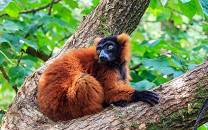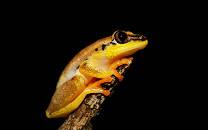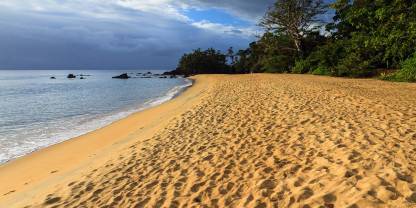Remote and utterly magnificent, Masoala National Park (Parc National de Masoala) is Madagascar’s largest national park and perhaps its most exciting and diverse. Masoala is only accessible by boat or on foot, and it offers wild hiking, an incredible array of wildlife, and spectacular scenery with and coastal forests. Getting here can mean a major expedition, but it will repay any time, effort and money spent a million times over.

-
Best Time To Go
- August to November (Less rain)
-
High Season
- July, August and December holidays (Though the park doesn’t get busy)
-
Size
- 2,205km² / 851mi²
-
Altitude
-
7-1,196m /23-3,924ft
 View Photos
View Photos
 View Photos
+24
Photos
View Photos
+24
Photos
Pros & Cons
- Adventurous off-the-beaten-track destination
- One of the most beautiful parks in Madagascar, with dense
- Exciting and serious hiking opportunities
- Lemurs, humpback whales, reptiles and more
- Kayaking possible in Antongil Bay
- Can be an expensive destination
- Accessible by chartered boat or on foot only
- Wet climate can make for uncomfortable conditions
Wildlife
Masoala is home to 10 species of lemur, including the sought-after, charismatic and endemic red ruffed lemur. Other lemurs to look for are the Masoala woolly lemur and white-fronted brown lemur. The lowland streaked tenrec can sometimes be found during the Wet season (December to July). There is lots of wildlife offshore as well, including humpback whales, which gather in Antongil Bay to breed from July to late September.
More about Masoala’s wildlifeScenery
Masoala protects the largest tract of lowland rainforest in the country and is an incredibly beautiful place. In Masoala, the primary forest comes down the slopes right to the coast, surrounding little white-sand bays. Small streams crisscross the forest, and the large variety of orchids and palm trees is a treat for botanists in particular.
Activities
Wildlife viewing and bird watching are the main activities in the park. These are usually combined with kayaking, hiking and boating. Hiking and boat trips also happen to be the main ways to get around the park, as there are no real roads for vehicle access within Masoala.
Weather & Climate
Masoala has a tropical climate with high humidity and rainfall: rain is possible at any time. The driest months are August to November. At this time, the average temperature is a comfortable 26°C/79°F. The rest of the year is warmer, with temperatures averaging 28°C/82°F but peaking much higher. January to March often see extreme weather, and the risk of cyclones is high during these months. Waterproof clothing is essential throughout the year.
More about the weather and climateBest Time To Visit
The period from August to November has the nicest weather as it is warm and the sea tends to be calm. Masoala has a wet climate and it makes sense to avoid the worst of the rains between January and April. Humpback whales can be spotted between July and late September, and lemurs have their young around October and November.
More about the best time to visit
